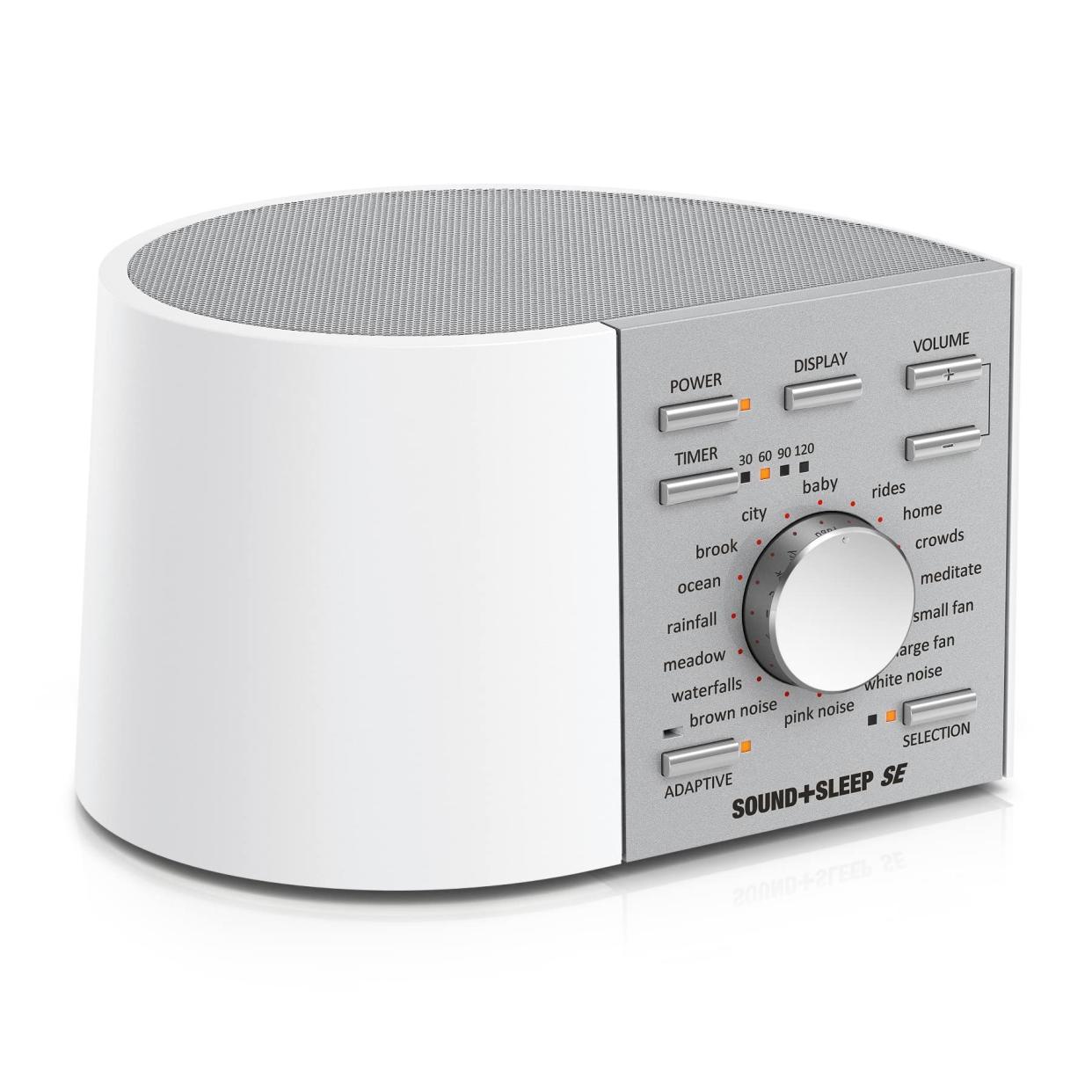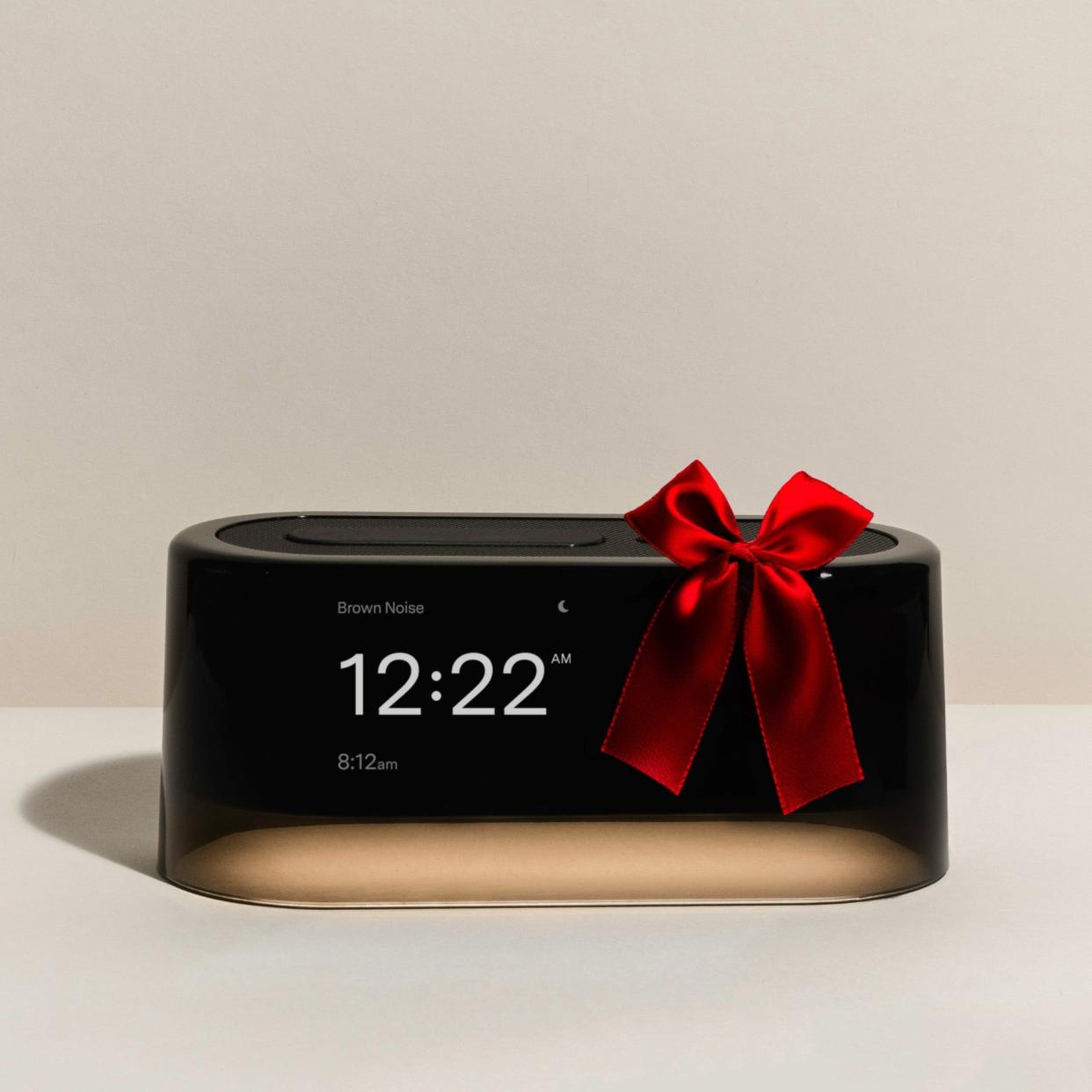How to Find Your Right Noise for the Best Sleep Ever

"Hearst Magazines and Yahoo may earn commission or revenue on some items through these links."
You probably know about white noise, or have seen one of those humming machines outside a therapist's office, or even bought one to drown out loud people in your house so you can hear yourself think. But white noise isn’t the only “color” of noise that is being employed to improve quality of life in various ways.
Each color of the rainbow (you know, violet on over to red) looks different to us because they have different wavelengths, frequencies and energy. And if you painted your eyes, nails and hair black or picked a happy color to brighten your kitchen, you’ve grokked that colors can influence how you feel (and reflect it, too).
Sounds, too, have these same types of differences. “As sound is not visible, using the color spectrum is a more concrete analogy for these noise colors,” says clinical audiologist Amy Sarow, Au.D. “White, pink and brown noise contain different amounts of energy across all frequencies [and] function in unique ways to influence our mental states.”
In other words, assigning colors to different types of sound is a way to identify and categorize them. And each “shade” of noise offers its own approach to dealing with background noise and other auditory distractions.
How shades of noise can help you sleep
Anxiety, stress and the general chaos of life can keep you up at night (like you really needed to us to tell you that!). Between your own racing brain, street sounds or a noisy bedmate, letting go so you can drift off is a challenge. Between 10 and 30% of adults suffer from insomnia, according to the National Sleep Foundation, and many more have the occasional bad night.
“The brain is constantly bombarded with external stimuli, which can make it difficult to relax and fall asleep,” Dr. Sarow says. “By listening to a consistent sound like white, pink, or brown noise, the brain can tune out other noises and focus on the soothing sounds, helping the listener to relax and fall asleep.”
Which type of noise is best?
White noise: a fuzzy blanket of sound
Most people think of white noise as a sort of consistent, fuzzy sound that, when utilized correctly, can drown out the sleep-destroying car alarm going off across the street or mute the yap-yap-yap of your neighbor’s relentlessly barking dog. “White noise is a combination of all audible frequencies, similar to the sound of a fan or static on a TV,” says Chelsey Borson, a certified sleep consultant based in White Plains, New York. “It can help mask background noises and create a consistent sound environment, which can be helpful for sleep and focus.” Dr. Sarow, who compares white noise to a “blanket of sound,” praises its effectiveness at drowning out noise, and adds that it’s white noise's combo of frequencies that makes it “a particularly useful tool in noisy, urban environments, enabling individuals to sleep with a sense of tranquility despite the surrounding cacophony of traffic or other distractions.”
Brown noise: a relaxing rumble
Literally on another side of the spectrum from white noise lies brown noise (also called red noise.) “Brown noise accentuates lower frequencies, has a deeper, more relaxing sound quality that resembles thunder rumbling or heavy rain [and] is suggested to have a significant role in reducing anxiety,” says Dr. Sarow. One possible reason brown noise elicits calming, sleep-inducing relaxation: “As the cochlea develops in utero first in the low-frequency range, exposure to brown noise might trigger early memories in the womb, creating a soothing, comforting sensation,” says Dr. Sarow. “Thus, brown noise could be a powerful tool in managing stress and inducing a state of relaxation.” Out of white, pink and brown noise, Dr. Sarow calls brown “the most calming.” “Brown noise can reduce stress and anxiety levels. It's a great choice for anyone feeling especially stressed or overwhelmed,” she says.
Pink noise: the softest sound
Pink noise is the soft, gentle middle ground between the blanket of white noise and the deep, low tones of brown noise. “Pink noise is filtered white noise and emphasizes lower frequencies,” says Dr. Sarow, calling it “a softer, more calming sound that resembles light rain or wind.” In addition, the sounds of pink noise tend to be rhythmical, “mimicking natural environmental sounds, such as light rain or rustling leaves,” she adds. “Pink noise has been shown to improve sleep quality and memory retention, making it a good choice for students or those looking to optimize their brain function.” If you find the gentle sounds of the great outdoors to be the most soothing, pink noise might be your best bet for bedtime.
If you’re having trouble choosing between white, pink, or brown noise, keep in mind that you’re not committing to a coat of paint for your living room. You can easily alternate between the sounds that work for you, depending on the night.
“In terms of choosing the best noise color, it depends on the specific sleep issues or desired experience,” advises Borson. If it’s unwanted noise that’s keeping you up, you may want to opt for white noise to quiet things down; but “when it comes to using noise colors for sleep, pink noise can promote relaxation and deeper, more restful sleep,” Borson says. “Brown noise, with its deep and soothing sound, can help lower stress levels and create a calming environment for sleep.”
And don’t hesitate to pair your chosen color of sound with another sleep-promoting technique. “We usually tell patients to test multiple sounds and find which one they prefer and pair that sound with relaxation techniques, breathing exercises, sleeping therapy and mindfulness,” says New York-based audiologist Ruth Reisman-Aguilar, Au.D.
How to find your noise
Of course, there are a bunch of apps for noise shades: The Noise Machine app lets you choose between different colors, as does Simply Noise.
There’s also videos on YouTube that will play the sound of your choice for up to eight hours straight, as well as noise machines (and combo noise-machine alarm clocks, like the Loftie) that allow you to alternate between colors depending on your needs.
Sleep Sound Machine

Sleep Sound Machine
amazon.com
$109.79
Loftie Clock

Loftie Clock
byloftie.com
$119.20
You Might Also Like
